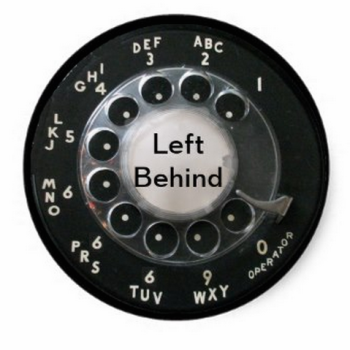National Public Radio’s “Morning Edition” yesterday discussed the image problem facing American automakers:
According to global marketing information firm J.D. Power and Associates, 42 percent of all car buyers … won’t even look at a vehicle built by a U.S. company.
Dave Sargent, J.D. Power’s vice president of auto research, said [that is] a mistake.
“Many consumers still have a view of the Detroit automakers that the products are not as reliable as the imports, but what our studies show is that that is simply not true,” he said.
Detroit has been closing the quality gap in recent years, Sargent said. In a study this summer of three-year-old vehicles, J.D. Power said Buick tied Lexus as the most dependable brand. In another J.D. Power study on quality, Ford won in five categories — more than any other company.
But Sargent said when it comes to cars, it takes years for perception to catch up to reality.
I appreciate the dynamic J.D. Powerman is describing. My own experience with cars designed by the Big Three is an unbroken string of hoopdies. My Honda Civic has run for more years and more miles than my Dodge Colt, Ford Escort, Chevy Cavalier and Chevette combined. Those earlier cars all broke down so often, stranding me at so many key moments, that I can still feel the anxiety of those strandings in my muscle memory. Just thinking about it makes my stomach churn. I can’t imagine easily coming around to feeling secure about relying on another Ford or Chevy to get me from point A to point B if I need to get there.
I have no problem with buying an American-made car — my Civic was built by the UAW in Ohio, my Escort was built in Korea — but it will be a long while before I overcome my hard-earned, visceral distrust of Detroit engineering.
So I understand that aspect of what the J.D. Power guy is talking about. But he fails to notice another equally significant reason that the Big Three automakers have a lousy reputation: They’ve spent millions of dollars over the past several decades on a PR campaign designed to persuade us that they don’t know what they’re doing.
General Motors, Ford and Chrysler have loudly insisted for years that they are technologically incompetent. They have spent millions of lobbying dollars to explain all the things they cannot do, all the improvements they are unable to make, all the ways their abilities, designs and engineering are inferior to those of their competitors. All of that money spent advertising their limits and incompetency has had an impact. American car buyers listened. We believed them.
Consider, for example, CAFE standards — targets for corporate average fuel economy. Every time that Congress or Al Gore or the Sierra Club has suggested these standards should be higher, Detroit shrieks that they can’t take the pressure, that it couldn’t possibly be done, that they don’t have the skill, the know-how or the basic competence to pull it off. Toyota, Honda, Mercedes and Volkswagen, on the other hand, just said, “More fuel-efficient vehicles? Hai. Ja. We can do that. We’re good at making cars.”
The same thing happened earlier with air bags and emissions standards. When California passed strict new emission standards in the 1990s, GM and Ford shipped their top lobbyists to Washington and Sacramento to argue that the new rules were technologically impossible. Toyota and Honda didn’t send lobbyists — they sent cars that met the new standard. The same dynamic occurred even earlier with seat belts. With GM’s lobbyists arguing that the company wasn’t capable of meeting the technological challenge of the seat belt why should consumers trust them to build reliable engines?
I’ve quoted this passage before from James Surowiecki’s “Fuel for Thought” column, but it bears repeating:
In the auto industry, there’s one thing you can always count on: if a new environmental or safety rule is proposed, executives will prophesy disaster. In the 1920, Alfred Sloan, the president of General Motors, insisted that the company could not make windshields with safety glass because doing so would harm the bottom line. In the ’50s, auto executives told Congress that making seat belts compulsory would slash industry profits. When air bags came along, Lee Iacocca told Richard Nixon that “safety has really killed all our business.” A few years later, when Congress was thinking about requiring fuel-economy standards, auto executives warned that instituting such standards would create “massive financial and unemployment problems.”
My point here isn’t whether this reflexive opposition to safety and environmental standards is right or wrong. I think it’s wrong, but set that aside. My point here is that the automaker’s lobbying strategy has been foolish. Their approach, for decades, has been to portray themselves as technologically incompetent, as incapable of meeting new challenges. Somehow they never considered how this would affect their reputation with the car-buying public.
The automakers’ lobbying strategy has, in a way, been a resounding success. The American public, or at least 42 percent of us, perceives them exactly as they have portrayed themselves — as people who aren’t very good at making cars and who don’t really know what they’re doing.
Detroit, in other words, is reaping what it has — deliberately — sown.
(Having said all of that, though, the Big Three would still all be turning a profit if America didn’t have such a dysfunctional, ass-backward nonsystem for health care. They all realize this, but so far they haven’t seen fit to make this, their preeminent problem, a priority for their very effective lobbyists.)












